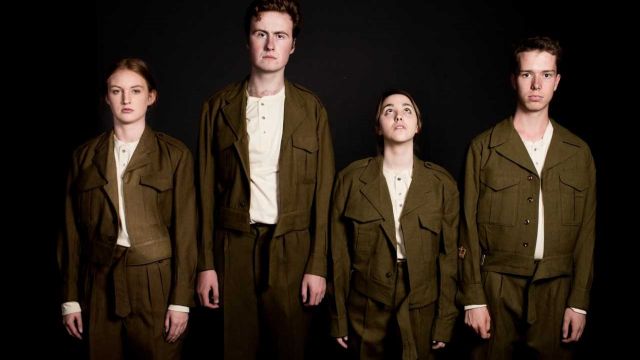Slaughterhouse Five
Slaughterhouse Five is based on the satirical novel by Kurt Vonnegut, published in 1969 (during the Vietnam War). The complex piece of literary meta–fiction, that stands the test of time due to its anti-war sentiment, has incited this adaptation by local writer/director Fleur Kilpatrick in collaboration with the Monash University Student Theatre association and Theatreworks, creating a thought provoking piece of theatre.
Slaughterhouse Five can easily be labeled as a vivid post–traumatic personal story, experientially told by Vonnegut, under the guise of the main character Billy Pilgrim, who reveals the horrors during the bombing of Dresden in World War II. He escapes into a science fiction time travelling fantasy world, the planet of Tralfamadore, while coping with his marriage, family life and an optometry business position inherited from his father-in-law.
Kilpatrick has ambitiously attempted to bring theatrical life to a complex literary masterpiece, while directorially choreographing an ensemble of dedicated actors who take the stage with pride and force. Excellent usage of theatrical devices illuminates Vonnegut’s descriptive prowess, via wheeled wooden blackboards and chalk - punctuating details of the brutal war with simple stick figures, drawn by the revolving cast members. Although overused, it does consistently illustrate the author’s literal meaning along with verbose storytelling and plenty of tell and show and or show and tell - maybe more than need be.
The time travel sequences offer rhythmic upheaval, catapulting from serious to satirical and to bordering on the ridiculous. Commendable referencing to Vonnegut’s “God Bless You, Mr. Rosewater” (1965), with the reintroduction of his alter- ego Kilgore Trout, the fantasy writer that Pilgrim discovers while convalescing in the psychiatric ward. The Tralfalmodorian dance is quirky and offers a much-anticipated science-fiction visual element. Australian accents were definitely not suitable - American accents would have further enhanced the production ringing in the truth and the American way, but the British soldiers were a real hoot.
The production is exceedingly long, performed in two acts. The use of repetition functions well and the another one dead-tally and the ongoing comment of “so it goes’ - war fatality, immunity and saturation of human death tolls are statements that need to be made. The ensemble’s finale - rally to tally death figures does pack a thematic and visual punch and further highlights the ludicrous fate of war.
Production values were exceedingly high, with poignant and cacophonous sound design (Justin Gardam) and effective contrasting and clapping lighting design (John Collopy), commendable set design (John Lehane) and costume design (Dij Kaur).
Flora Georgiou
Subscribe to our E-Newsletter, buy our latest print edition or find a Performing Arts book at Book Nook.

